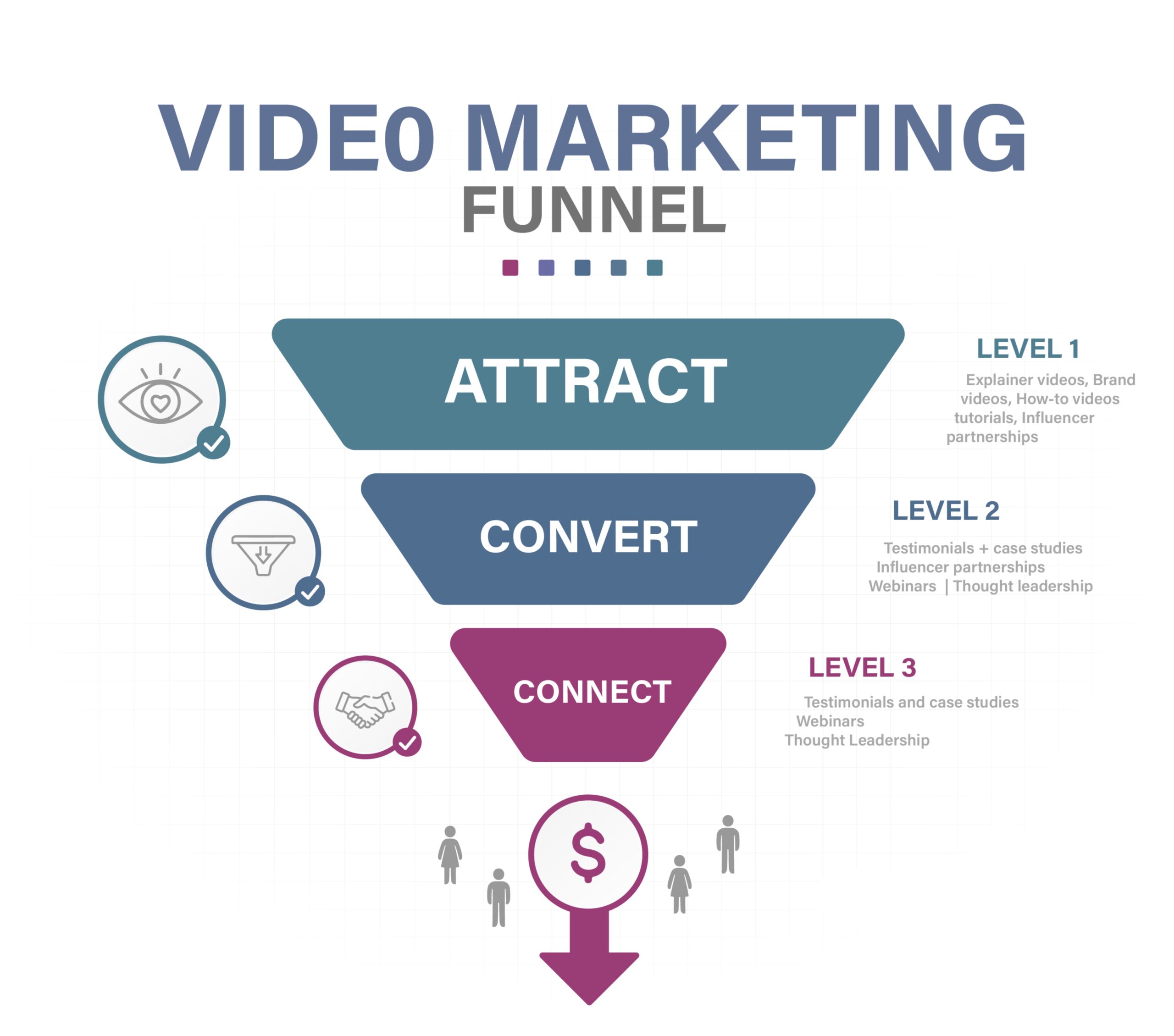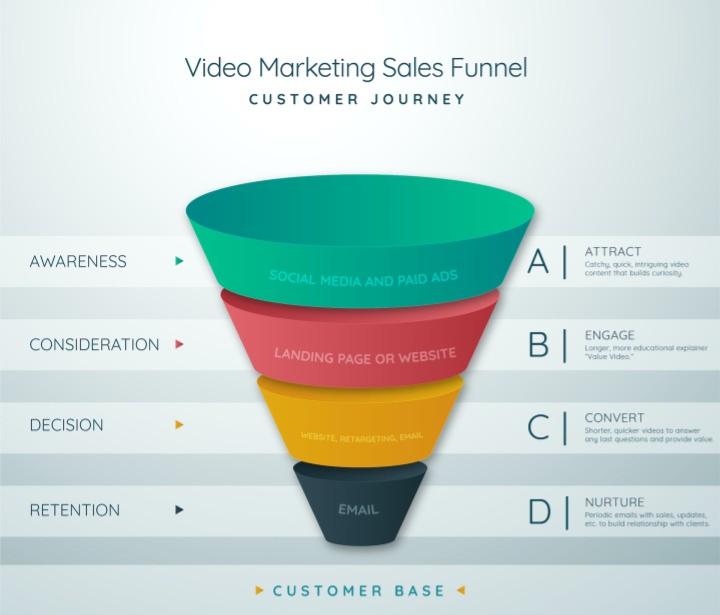B2B marketers face challenges in video marketing. Traditional ads like TV are becoming less popular, and their ability to attract sponsors is fading.
Meanwhile, online video, social media stories, and video streaming platforms are growing because they offer better engagement and targeted reach.
With so many new platforms and options, where should you begin?
One great way to start is by organising your video content into a marketing funnel. A marketing funnel shows customer journey from seeing your content to making purchase.
Adapting to Today’s Video Marketing Trends
B2B videos are changing from boring infomercials to engaging stories that grab attention, educate, and invite viewers to join the conversation. This storytelling method appeals to basic human needs for connection, relevance, and engagement.
With the right strategy, creating videos that resonate with a B2B audience can be a powerful tool to boost brand awareness and increase sales.
Best Video Formats to Capture B2B Attention
The format of your video can be just as important as the message itself when it comes to organising your funnel strategy. Here are some video types that work well with B2B audiences, aligning with different marketing goals and audience needs:
Explainer Videos
These videos simplify complex ideas, making them perfect for introducing new products or services. They often combine animation, screenshots, live action, and storytelling to show how a company solves a problem.
How-to Videos and Tutorials
These videos offer step-by-step guidance on how to use a product or service, helping viewers better understand & remember information by showing rather than just telling.
Testimonials and Case Studies
These videos share real-life customer stories and endorsements, building trust & credibility with potential buyers by showing proven success.
Webinars and Live Streams
These formats allow companies to engage with their audience in real-time, fostering interaction and personalisation. You can also repurpose this content into blogs or short social media videos.
Thought Leadership Videos
These videos position company leaders as experts in their field, helping to build authority, influence, and trust—especially effective on platforms like LinkedIn.
Founder Videos
Featuring your company’s founder or CEO, these videos add a personal touch & create a deeper connection with the audience by putting a face & story behind your brand.
Influencer Marketing
Partnering with industry influencers can boost visibility and brand awareness. Influencers with strong followings can expand the reach and impact of your B2B videos, especially when they align with your industry.
How to Structure Your Videos in a Marketing Funnel
1. Analyse your customer journey to turn curiosity into conversions.
The first step in building a marketing funnel is analysing each stage of your customer journey and defining your target audience.
Understanding the buyer’s journey is essential for B2B companies looking to create effective video content. This alignment helps boost brand awareness and creates a smoother, more efficient path to purchase.
While there are various types of marketing funnels, let’s simplify it into three main stages: attract, convert, and connect.
2. Build and bolster your funnel with strategic video deployment.
Positioning different video formats at key stages of the buyer’s journey helps nurture leads and guide them through the sales funnel.
The goal is to ensure that the right video reaches the right audience through the best channels, supporting the buyer’s journey and increasing the chances of a sale.
At the top of the funnel, your focus is on attracting potential buyers, with key metrics like reach and engagement.
Explainer videos, branded content, how-to videos, tutorials, and influencer videos are great formats for this stage, acting as an introduction or hook.
As you move down the funnel, the goal shifts to nurturing curiosity about your product or service. These videos should answer questions and build trust.
At the conversion and connect stages, the important metrics are sales, sign-ups, and leads. Here, videos should further pull in potential buyers.
Testimonials, case studies, webinars, influencer partnerships, and thought leadership videos work well at the bottom of the funnel, as they provide deeper insights into your product and brand identity.
3. Continually strengthen your strategy with testing and analytics.
Your campaign doesn’t end with creating & distributing content. It’s about continually optimising your B2B video marketing strategy to take risks & reap bigger rewards.
With today’s video analytics, you can track which parts of your video viewers watch, re-watch, or skip. This helps marketers quickly identify which parts of the funnel are effective and which need improvement.
Using a marketing funnel gives you the advantage of engaging with the customer journey in real-time. As your customer interacts with your content, you can make small adjustments along the way to continuously enhance their experience.
In order to keep up, today’s marketers need to adopt an out with the old, in with the new mindset.
An excellent marketer must be adaptable and willing to take risks. Even in B2B, we’re moving away from bland corporate content & towards more engaging, creative videos.
B2B videos that feature real people, authentic environments, and genuine emotions stand out. After all, it’s a human on the other side of that negotiation or Zoom call.
Did you know 95% of B2B customers say video plays a key role in their purchasing decisions? Let us help you showcase your brand with a narrative-driven, expertly crafted video that grabs attention from the first frame.
Book a free consultation with POW New Media today and start your strategy call with our marketing experts!





